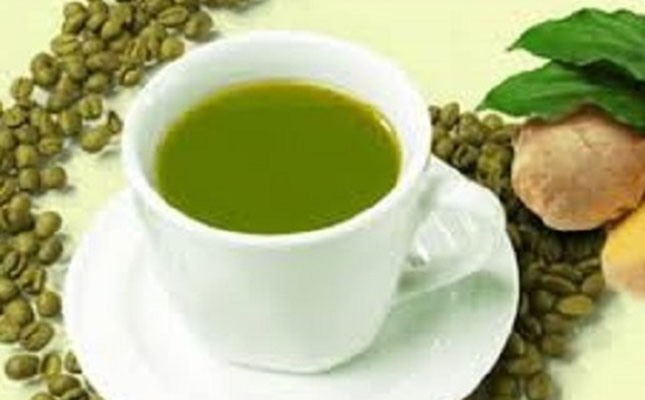
After Water, the most preferred drink is either tea or coffee for most of us. Many usually begin their day with a cup of a bed tea or coffee. And, some even complaint of dullness or a headache without that first cup of tea or coffee.
A cup of black coffee provides almost no nutritional value. Some even prefer it with loaded Sugar. Coffee provides caffeine, a stimulant that boosts metabolism and gets people energetic But, Caffeine consumed in larger amount has many side effects such as dehydration, increase body stress levels, ,upsets stomach, hampering digestion and increases anxiety levels for the body.
Is there a healthier version of Coffee just as we have Green Tea? Yes there is Green Coffee
Before that let’s understand some basics of Coffee
- There are three types of Normal coffee beans varieties:
- Coffee Arabica.
- Coffee Robusta
- And the blended types.
- How to differentiate from normal Coffee from Organic Green Coffee Beans?
Normal Coffee beans are light to dark in color as it depends upon region, temperature and roasting conditions. See Image given below-

Arabica coffee beans differ from Robusta coffee beans at many levels. See the following image –

Un-roasted bean color: In its un-roasted form, Arabica will be a darker shade of green, where Robusta tends to be more straw colored.
Arabica beans tend to have a sweeter, softer taste, with tones of sugar, fruit, and berries. Their acidity is higher, with that winey taste that characterizes coffee with excess while Robusta beans yield a harsher, bitter tasting cup often described as grain-like, oatmeal and woody. lint acidity.
- Advantages of Green Coffee-
The Green Coffee that we get is derived from dried green coffee beans (Coffee Robusta) and has an active ingredient called Chlorogenic acid. (CGA).Latest research has confirmed that organic green coffee contains high concentrations of antioxidants in the range of 200 to 550mg per cup (6oz) – a level far exceeding that of green tea. But, although both green coffee and green tea contain high levels of antioxidants, green coffee tends to contain higher levels of the simple phenolicsand tea contains larger levels of catechin.
- Other Variety of green coffee-
- Organic Coffee:This Organic Coffee is grown on fertile volcanic soil, without pesticides and grown domestically without chemical fertilizers.
- Organic Gourmet Coffee-Organic Gourmet Coffee is premium quality coffee (predominantly some of the best varieties of Coffee Arabica) that is grown organically. Based on content of caffeine it can be divided into two types, namely caffeinated and decaffeinated. From the point of view of health, the decaffeinated one will be the best but, you may have to compromise with the taste and flavor slightly.
- Decaffeinated coffee– In this method of decaffeination the beans are steamed for about 30 minutes in order to open their pores. Once the coffee beans are receptive to a solvent, they are repeatedly rinsed with either methylene chloride or ethyl acetate for about 10 hours to remove the caffeine, which reduces harmful effect of caffeine.
How To Select And Store Organic Coffee?
1) If you bought whole beans, try to grind them just before you want to brew it to get the best flavor and aroma out of them. Buy only the fresh beans and if possible roast them at home.
2) Always buy “100% Organic Coffee”/ Decaffeinated beans. Do not compromise with “Contains Organic” type of coffee.
- Benefit Of Green Coffee are many
- Rich in anti-oxidants: Green Coffee beans are rich in antioxidants, which reduce the damaging effects of free radicals in our body and take care of our overall health. A number of studies have confirmed that raw and unprocessed green coffee beans possess 100% pure Chlorogenic Acid (CGA), which is basically an ester of caffeic acid having strong antioxidant properties. It can put a check on the levels of glucose in our bloodstream and prevent our skin cells from getting dented.
- Good for skin, hair, reduces effect of free radical: Chlorogenic Acid present in green coffee beans can reduce the effects of free radicals in our body up to 10 times than regular green tea. As the beans are not roasted, there are some other anti-oxidative agents from the polyphenol family, ferulicacid, etc., which decelerate the ageing procedure and give us youthful skin, hair, prevent hair fall.
- Boost metabolic rate – The Chlorogenic Acid present ingreen coffee beans is also known as a metabolism booster. It increases the Basal Metabolic Rate (BMR) of our body to a great extent, which minimizes excessive release of glucose from the liver into the blood. Due to the lack of glucose, our body starts burning the stored fat cells in order to fulfill its glucose requirement. Thus, pure green coffee beans raise our fat burning capability and eventually help us shed off excess weight.
- Normal Recommendation – 2 cups Of Green Coffee in a day. You can have it either in hot form-(add pinch of Cinnamon Powder ) or Cold form-(by adding Ice + Mint )
- Please Note – Many a times Green Coffee is a bean. There is also Green Coffee Bean Extract supplement with GarciniaCambogia but, it has many side effect because of high toxicity levels present in Such supplements are hazardous for the body. Try Avoid Using Them. The Food and Drug Administration (FDA) recommends not to use such products and be cautious when it comes to such supplements. If you take any medicines regularly, talk to your doctor before you start using green coffeesupplement. It interferes with many medicines.
Let’s Grab a Cup Of Green Coffee now and kick start you’re day with a healthy version of coffee.



